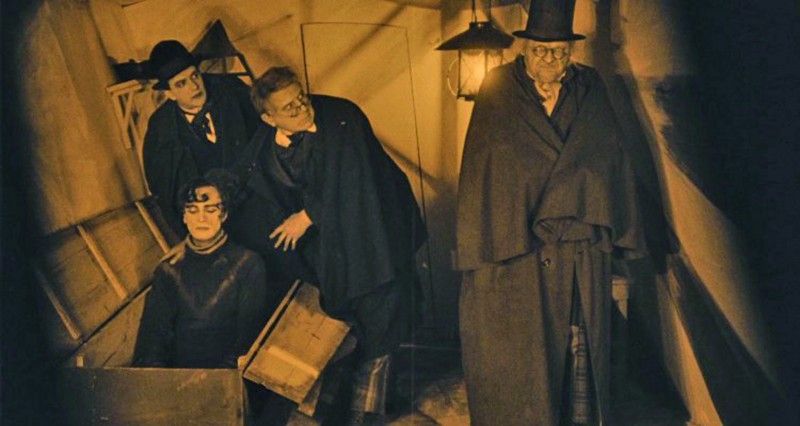
Ever wondered what makes a horror movie truly unforgettable? Sure, blood-pumping jumpscares and mind-bending plot twists are fantastic, but let’s be real: nothing quite captures our attention like a powerhouse performance from a ‘scream queen.’ This iconic title refers to a prominent and influential female figure in horror films, one who delivers a strong, believable, and unforgettable performance.
They’ve been absolutely crucial to the genre since its very dawn, shaping how we experience fear on screen and leaving us biting our nails for generations. Long before the term ‘scream queen’ even existed, women were integral to horror. Think about it – we had notable examples from the silent era like Lil Dagover’s Jane Olsen in *The Cabinet of Dr. Caligari* (1920) and Greta Schröder’s Ellen Hutter in *Nosferatu* (1922).
But the true birth of the ‘scream queen’ as we know it is largely credited to Fay Wray in 1933’s *King Kong*, where she, let’s just say, did a *whole lot* of screaming. From that moment on, the genre would simply not be what it is without these incredible women displaying fear in its rawest, purest form. These phenomenal performances aren’t just about high-pitched wails; they enthrall audiences, sometimes even terrorizing viewers, and their impact endures through generations. While the early definition might have been a bit one-dimensional – think damsels in distress who met a gruesome end – the role has beautifully morphed. With feminism raging and the success of slasher films, scream queens became less about being ‘vulnerable and defenceless creatures’ and more about ‘having a fighting chance’ or even ‘killing their terrorisers.’ So, get ready to discover the women who’ve made the most electrifying and marvelous impact on horror, because we’re bowing down to the most iconic scream queens of all time!

1. **Fay Wray: The Genesis of the Scream Queen**When we talk about the origin story of the scream queen, there’s one name that undeniably stands at the beginning: Fay Wray. She literally ‘invented screaming’ as Ann Darrow in the monumental 1933 classic, *King Kong*. Before her, the idea of a female lead’s vocal terror being a cornerstone of horror wasn’t fully crystallized, but Wray changed everything with her breathtaking portrayal of raw, primal fear.
Her performance in *King Kong* isn’t just a moment in film history; it’s *the* moment for the scream queen trope. Imagine: Wray comes face to face with the colossal ape in the dense jungle. The camera zooms in on the creature’s menacing visage, then cuts back to Wray, who unleashes a ‘spine-chilling scream that strikes audiences to this day right to their core.’ It wasn’t just loud; it was agonizing, believable, and utterly unforgettable, setting a new standard for how terror could be conveyed on screen.
This ‘piercing pipes and agonised performance’ didn’t just earn her the ‘aptly crowned’ title of scream queen; it ‘laid the foundation for how scream queens of the 20th century would be portrayed in horror.’ She showed the world how a single, powerful scream could communicate immense dread and become a focal point of a terrifying narrative. It was a masterclass in evoking visceral reactions from an audience, proving that the human voice could be as impactful as any monster or special effect.
Beyond *King Kong*, Fay Wray cemented her genre prowess with other notable appearances around the same era. She appeared in *Mystery of the Wax Museum*, *The Most Dangerous Game*, and *The Vampire Bat*, showcasing her talent for suspense and terror time and again. Her work established a prototype – a leading lady whose fear was not just a plot device, but a powerful, captivating element of the horror experience itself. Without her groundbreaking work, the scream queen lineage as we know it might have taken a very different path.
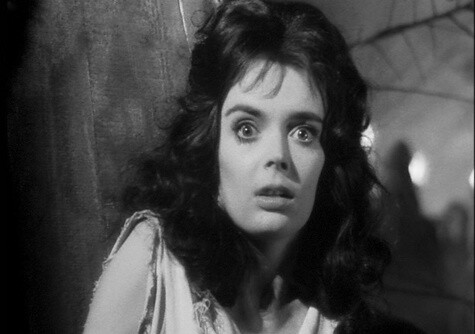
2. **Barbara Steele: The Gothic Goddess of the 1960s**Fast forward a few decades, and you’ll find the next reigning monarch of fear, Barbara Steele, who was unequivocally ‘the it girl-scream queen of the 1960s.’ With her mesmerizing, ‘preternatural beauty’ and piercing eyes, she wasn’t just an actress; she was a gothic icon, earning titles like ‘The Queen of All Scream Queens’ and ‘Britain’s first lady of horror.’ Her extensive work in gothic horror films of the decade built an impressive resume that cemented her legendary status.
Her definitive breakout moment came in Mario Bava’s *Black Sunday* (1960), where she tackled a dual role. She played Asa Vajda, a vampiric witch cursed to death by her brother, and Katia Vajda, her descendant from two centuries later. The film’s ‘iconic opening scene’ is pure horror gold, showcasing Steele’s unforgettable presence as ‘a spiked mask of Satan is being brutally hammered into her face.’ It was a brutal, unforgettable introduction that instantly branded her as a force in the genre.
Steele’s captivating allure and ability to convey dread made her a go-to for Italian horrors during the 60s. Her filmography from this period reads like a who’s-who of classic chilling cinema: *The Horrible Dr.Hichcock* (1962), *The Ghost* (1963), *The Long Hair of Death* (1964), and *Castle of Blood* (1964). Each role further solidified her reputation as the queen of atmospheric, eerie tales, blending beauty with terror in a way few others could.
She also ventured beyond Italian productions, starring in the American adaptation of Edgar Allan Poe’s *The Pit and the Pendulum* (1961), proving her versatility across different horror landscapes. Even decades later, Steele continued to grace the screen in horror gems like *The Curse of the Crimson Altar* (1968), David Cronenberg’s *Shivers* (1975), *Piranha* (1978), *The Silent Scream* (1979), and *The Butterfly Room* (2012), showcasing her enduring legacy and influence throughout the genre’s evolution.

3. **Janet Leigh: The Mother of the Slasher Film**If you’re compiling a list of scream queens, Janet Leigh is not just on it; she *is* the reason an entire subgenre exists. Her unforgettable turn as Marion Crane in Alfred Hitchcock’s groundbreaking *Psycho* (1960) birthed ‘her iconic scream queen moment.’ It’s a performance that earned her a Golden Globe for Best Supporting Actress and an Academy Award nomination, proving that horror could also be critically acclaimed.
And let’s be real, you know the scene: Marion Crane’s ill-fated shower. This ‘shower murder scene is legendary not only because it features 50 cuts and over 75 camera angles in just 45 seconds,’ but because it quite literally ‘gave birth to the subgenre’ of the slasher film. Before *Psycho*, no one expected the leading lady to be dispatched so unceremoniously, and so early. Leigh’s performance redefined cinematic storytelling and audience expectations forever.
Her character’s shocking demise ‘revolutionized horror forever,’ fundamentally altering ‘how violence and uality were portrayed in cinema thereafter.’ It smashed traditional narrative tropes, making audiences realize that no character was truly safe. The ‘black-and-white sequence’ featuring ‘Leigh’s agonized face splashed with inky-black blood and silhouetted by a mysterious knife-wielding killer’ perfectly captured the era’s perception of scream queens as ‘striking, would-be pin cushions’ whose beauty made their tragic ends even more terrifying.
This single, unforgettable role not only cemented Leigh’s status as a scream queen icon but also laid the groundwork for countless films to follow. It was a pivotal moment where a female character, through her sheer terror and a shocking exit, became the ‘mother of the slasher film,’ influencing generations of filmmakers and shaping the very DNA of modern horror. It’s safe to say, our nightmares wouldn’t be the same without her.
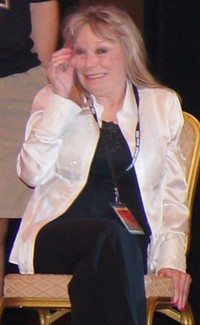
4. **Marilyn Burns: The Original Final Girl’s Visceral Terror**When it comes to raw, unadulterated terror, Marilyn Burns delivered a performance that has haunted generations of horror fans for decades. She holds a unique and incredibly significant place in horror history, often recognized as ‘the original final girl’ for her gut-wrenching role as Sally Hardesty in the seminal *The Texas Chainsaw Massacre* (1974). While Olivia Hussey’s film premiered on the same day, Sally’s unambiguous escape from Leatherface solidified Burns’ claim to the title.
Sally Hardesty’s ordeal is the stuff of legends. She is the sole survivor among her friends, managing to ‘escape Leatherface and his cannibalistic family’ through sheer grit and unimaginable terror. Burns’ portrayal was nothing short of ‘visceral,’ an ‘agonizing’ depiction of all the horrors her character had to withstand. She embodied suffering in a way that felt terrifyingly real, making every moment of Sally’s fight for survival an intensely uncomfortable and unforgettable experience for viewers.
Her performance transcended mere screaming; it was an ‘icon of a scream queen for surviving against all odds,’ showcasing a resilience that would become a hallmark for future final girls. The sheer mental and physical anguish Burns conveyed made Sally’s journey from victim to survivor a truly harrowing one, cementing her as a character who stood for more than just a body count. She was the embodiment of human endurance pushed to its absolute limits.
And who could ever forget *that* final scene? ‘That final scene where she narrowly escapes all bloodied and maniacal in the back of a pickup truck is one of the most recognizable images in horror movie history.’ The image of her ‘uncontrollable, mad hybrid of a laugh and wail’ is utterly ‘unforgettable,’ a disturbing crescendo to her night of hell. It’s a powerful, primal expression of trauma, triumph, and madness all rolled into one, a testament to Burns’ incredible ability to convey terror in its purest, most unsettling form.
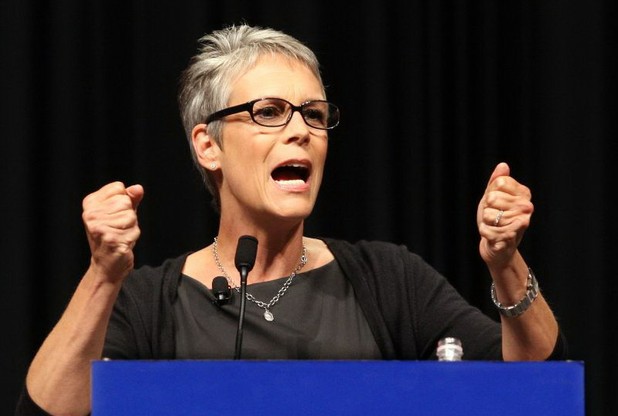
5. **Jamie Lee Curtis: The Reigning Queen of Resilience**Let’s be honest, ‘no scream queen list is complete without the most iconic Hollywood scream queen in cinematic history, Jamie Lee Curtis.’ Her name is practically ‘synonymous with scream queen,’ and for good reason! Not only is she a ‘legacy scream queen because her mother, Janet Leigh, starred in *Psycho* (1960),’ but Curtis herself has forged an unparalleled path in the genre, becoming the face of modern horror resilience.
Her feature-film debut as Laurie Strode in John Carpenter’s original *Halloween* (1978) is arguably what ‘comes to the minds of most when they hear the term ‘scream queen.” Laurie Strode, the ‘cunning babysitter’ who faced off against the notorious Michael Myers, ‘created a final girl template for films to follow.’ This ‘all-American teen terrorized by Satan himself’ became ‘one of the most prominent and beloved characters in horror movie history,’ evolving into ‘an unbeatable survivor in later films of the franchise.’
Curtis didn’t just stop at *Halloween*. Her horror resume is a veritable hall of fame, featuring roles in *The Fog* (1980), *Prom Night* (1980), *Terror Train* (1980), and *Road Games* (1981). Each performance solidified her ‘badass heroine’ status, constantly reinventing what a scream queen could be. She even had a fantastic role in the *Scream Queens* television series, a ‘tongue-in-cheek nod to her legendary status,’ showing she’s always in on the fun.
While ‘Curtis does feel like the most recognizable scream queen,’ she’s often remembered as a ‘final girl type’ because, well, she just keeps surviving! Her ‘brilliant and brave faceoff’ with Myers spurred countless sequels, and she continued to be ‘at the heart of the horror and heart of what we’re seeing on the big screen.’ Even as she said a fond farewell to Laurie Strode in *Halloween Ends* in 2022, her impact on the genre and its audiences is undeniable. She’s an A-list actress who will forever be ‘tethered to horror,’ a true icon who has ‘continue screaming and slaying her way through the screen again soon.’

6. **Jessica Harper: Battling Supernatural Evil with Poise**Not all scream queens are running from masked maniacs in abandoned cabins; some are navigating dark, elegant dance academies hiding ancient evils. Jessica Harper brilliantly ‘lands on this list for her iconic performance as Suzy Bannion in Dario Argento’s captivating *Suspiria* (1977).’ Her role in this giallo masterpiece is as integral to the film’s hypnotizing atmosphere as its legendary visuals and unforgettable musical score.
Harper’s ‘wide-eyed performance as the aspiring dancer who uncovers the coven of witches’ perfectly captured the unsettling beauty and dread of the film. She portrayed a character who was both courageous and undeniably fearful, balancing ‘her character’s courage and fear’ with a captivating blend of vulnerability and determination. It was a nuanced performance that resonated deeply, making Suzy’s journey through the academy’s sinister secrets utterly compelling.
What truly sets Harper apart is the unique challenge her character faced. She ‘wasn’t your average scream queen fighting against a human killer.’ Instead, Suzy had to ‘defeat a supernatural evil at her prestigious dance academy,’ a far more ethereal and insidious threat. This elevated her role beyond typical slasher fare, placing her in a realm of psychological and occult horror where intelligence and intuition were as crucial as physical prowess.
Her work in *Suspiria* proved that a scream queen’s strength could come from within, not just from running or fighting. She navigated a world steeped in dark magic and ancient curses with a remarkable blend of terror and tenacity. Jessica Harper’s ability to anchor such an artistically audacious and genuinely terrifying film firmly places her among the legends who showed the multifaceted nature of fear in cinema.
7. **Shelley Duvall: A Haunting Portrayal of Fear in The Shining**Shelley Duvall’s performance in Stanley Kubrick’s *The Shining* (1980) is, without a doubt, one of the most talked-about and haunting portrayals of terror in cinematic history. While she may have later ‘opted for a quiet life over a Hollywood one,’ her work as Wendy Torrance ‘leaves other horror ladies in the dust’ with its raw, unflinching depiction of a woman pushed to the brink of sanity. It’s a performance that truly elevated the film to legendary status.
Wendy Torrance’s descent into fear is a masterclass in conveying psychological horror. Duvall’s ‘spine-chilling scream and the look of fear in her eyes was a glorious portrayal of terror,’ making every moment she was on screen agonizingly palpable. The sheer panic, desperation, and growing madness she conveyed became an indelible part of the film’s terrifying power, reflecting the supernatural and domestic horrors Wendy endured at the isolated Overlook Hotel.
It’s important to acknowledge the tragic context surrounding this iconic performance. ‘Sadly, Duvall was forced to endure real cruelty at the hands of Kubrick while filming the movie and her mental health suffered in preparation for the role.’ She was playing ‘a woman who suffered abuse at the hands of her husband,’ and the psychological torment she experienced on set undoubtedly contributed to the raw authenticity of her portrayal. It’s a stark reminder of the sacrifices actors sometimes make for their art.
Despite the personal cost, Duvall’s performance as Wendy Torrance remains iconic, a testament to her profound ability to embody terror in its most vulnerable and desperate form. Her screams weren’t just noises; they were the desperate cries of a woman trapped, terrified, and fighting for her life and the life of her child. Her legacy in *The Shining* is a powerful, if complicated, one, securing her a permanent place among the most impactful scream queens ever to grace the screen.
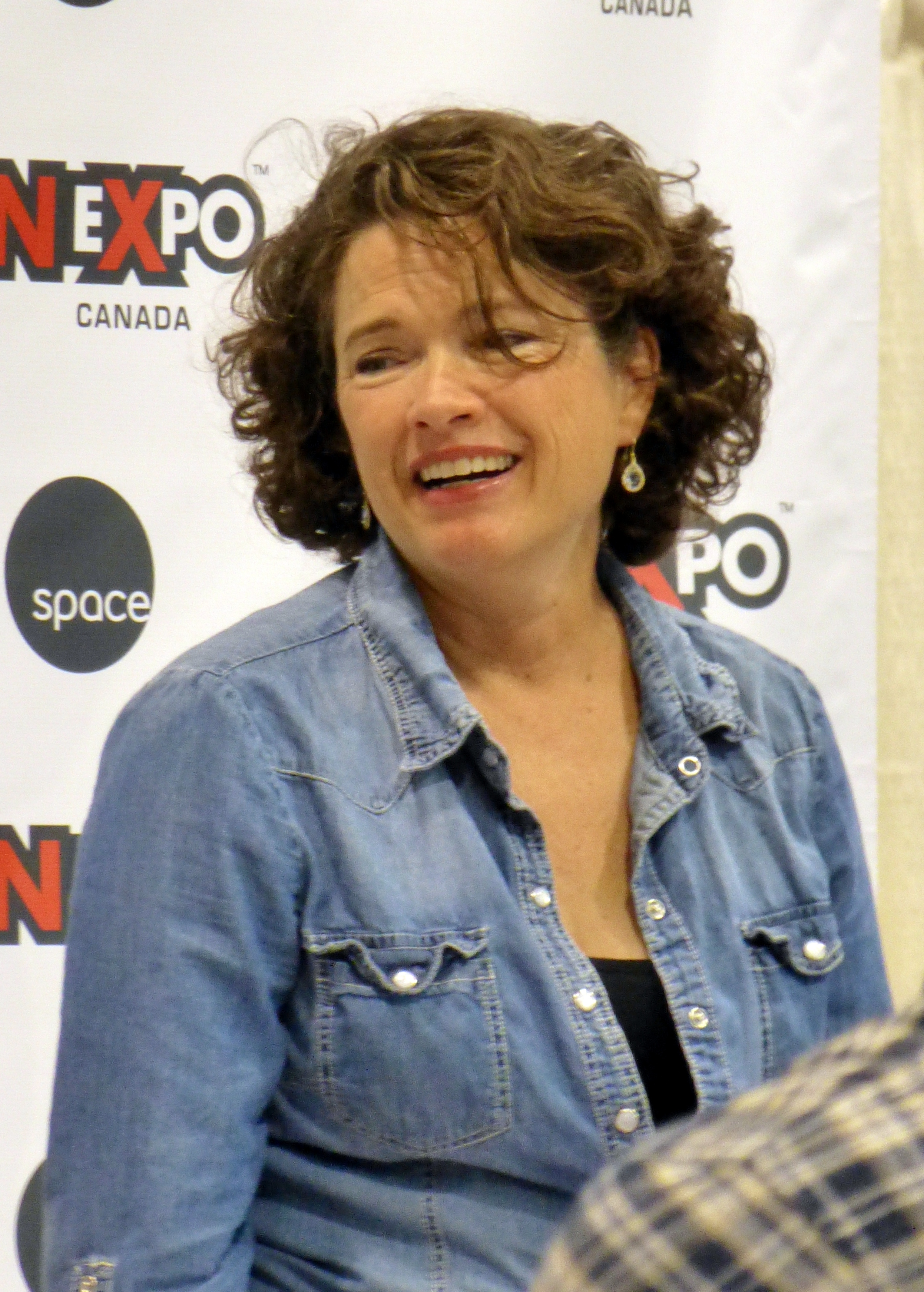
8. **Heather Langenkamp: The Fearless Fighter of Elm Street**When you think of the ultimate showdown against a supernatural villain, Heather Langenkamp’s turn as Nancy Thompson in *A Nightmare on Elm Street* (1984) is probably etched into your mind. While she has dozens of films to her credit, Nancy is the role that truly solidified her as a legendary final girl and scream queen. She wasn’t one to simply run and hide; Nancy redefined what it meant to face terror head-on.
Nancy Thompson’s unique approach to battling Freddy Krueger was groundbreaking. Instead of succumbing to fear, she actively chose to outsmart him, understanding that her fear was his power. Her character didn’t just stumble into survival; she meticulously sought out the truth and confronted evil directly, making her a beacon of strength among scream queens. She wasn’t a final girl who escaped through sheer luck; she fought for it, every terrifying step of the way.
Her resilience and intelligence made her an unforgettable icon. However, her return in *A Nightmare on Elm Street 3: Dream Warriors* saw her meet a tragically ‘cruel demise as a hero,’ a moment widely considered one of the ‘most unfair kills in horror cinematic history.’ Despite this, Langenkamp’s impact is undeniable, and fans still ‘dream’ of seeing her face off against Freddy one final time, proving her enduring legacy.
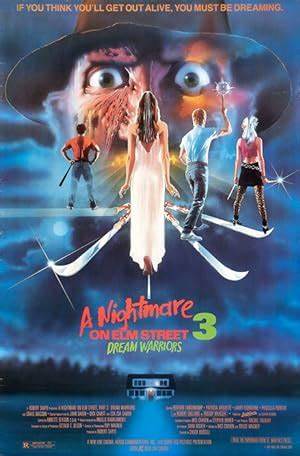
9. **Barbara Crampton: The Cult Icon Who Defies Labels**Barbara Crampton has an impressive 78 credits to her name, making her a bona fide cult icon in the horror genre. What’s interesting, though, is her personal ‘distaste for the scream queen title,’ which she feels ‘implies that you’re good at two things: howling at the top of your lungs and being a woman.’ But regardless of her feelings about the label, her immense talent and consistent contributions to fear-based cinema cannot be overlooked.
Crampton made her film debut in Brian de Palma’s *Body Double* (1984), but it was her role in the comedy-horror classic *Re-Animator* (1985) that truly launched her into the horror spotlight. Throughout the 1980s and 1990s, she continued to make a significant splash with memorable performances in genre staples like *Chopping Mall* (1986), *From Beyond* (1986), and *Castle Freak* (1995), cementing her status among horror aficionados.
What makes Crampton particularly remarkable is her enduring presence and evolution in the genre. In more recent years, she’s continued to star in acclaimed horror films such as *You’re Next* (2011), *We Are Still Here* (2015), and *Jakob’s Wife* (2021). Not only has she delivered compelling performances, but she’s also ventured behind the scenes, producing three of her recent films, showcasing a versatility and influence that goes far beyond simply screaming on screen.
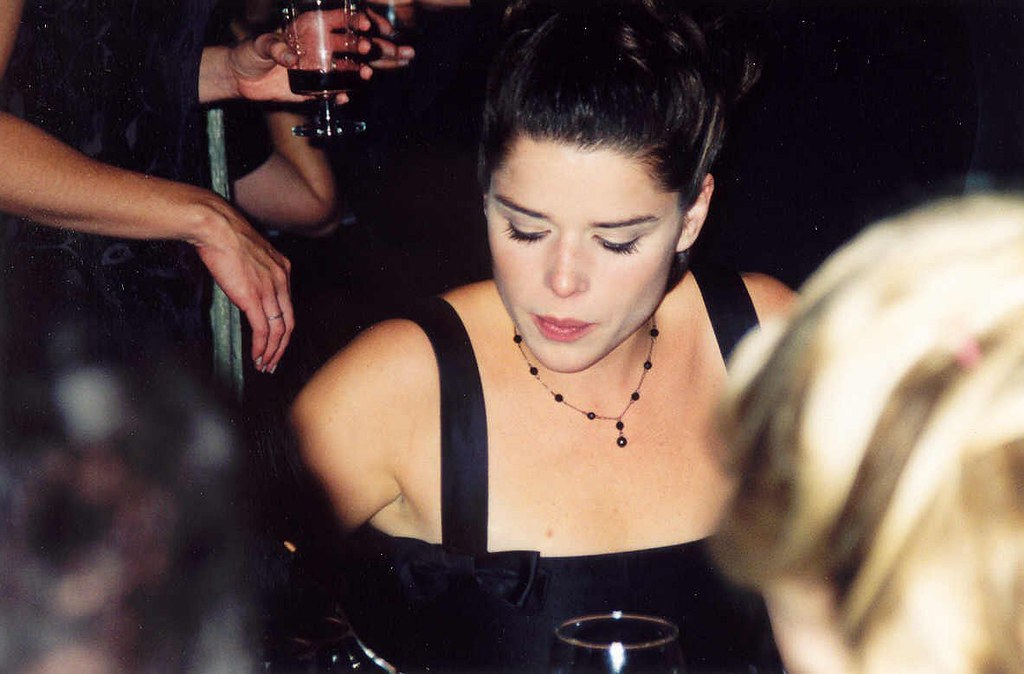
10. **Neve Campbell: The Unstoppable Force of Woodsboro**Is there any name more synonymous with modern horror survival than Neve Campbell’s Sidney Prescott? *Scream* (1996) introduced us to ‘one of the most beloved survivors of the genre,’ a character who would become ‘an unstoppable force of a woman with true grit.’ Through multiple films, Campbell has flawlessly portrayed Sidney’s incredible journey, showing her growth from a haunted teenager to a hardened, fearless survivor.
Sidney Prescott isn’t just a final girl; she’s *the* ultimate final girl in slashers. Time and again, ‘countless maniacs have tried taking her down and countless have failed.’ Her character becomes ‘more fierce and fearless with each film,’ showcasing a resilience that’s truly aspirational. She’s not just ‘The Millennial Scream Queen’; she’s a benchmark for what a strong female protagonist in horror can be.
Her ability to continually confront Ghostface and emerge victorious has made her an indelible part of pop culture. Sidney’s unwavering spirit and Campbell’s consistent, powerful portrayals have ensured her place in horror history. Seriously, ‘here’s hoping that the studio pays Neve what she deserves so we can see her join in on the fight against Ghostface in Scream VII’ because we can never get enough of her fierce resilience!
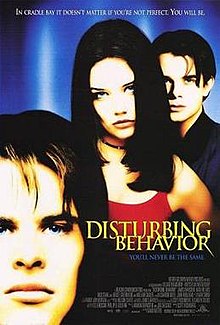
11. **Katharine Isabelle: The Underrated Icon of Lycanthropy and Body Horror**Katharine Isabelle is a horror icon who, frankly, ‘deserves a lot more recognition than she is given.’ Her career has been marked by memorable and often unsettling roles, starting with her first horror film, *Disturbing Behavior* (1998). However, it was her transformative performance as the ‘iconic Ginger Fitzgerald in the lycanthropic coming-of-age horror *Ginger Snaps* (2000)’ that truly cemented her status.
*Ginger Snaps* wasn’t just a werewolf movie; it was a powerful metaphor for female adolescence, so impactful that it ‘heavily inspired the feminist cult classic *Jennifer’s Body* (2009).’ Isabelle’s raw and compelling portrayal of Ginger’s monstrous transformation resonated deeply with audiences, and she even reprised her role in subsequent sequels, further exploring the dark depths of the character.
Beyond her werewolf exploits, Isabelle has left her mark on various corners of horror, appearing in films like *Carrie* (2002) and *Freddy vs. Jason* (2003). A truly standout moment in her career, however, is her role in the ‘criminally underrated body horror gem *American Mary* (2012).’ In this powerful film, she played the titular character, a young surgical student who ‘regains her power and control by diving into the underground world of body modification after a brutal rape,’ delivering a performance that is both disturbing and incredibly empowering.
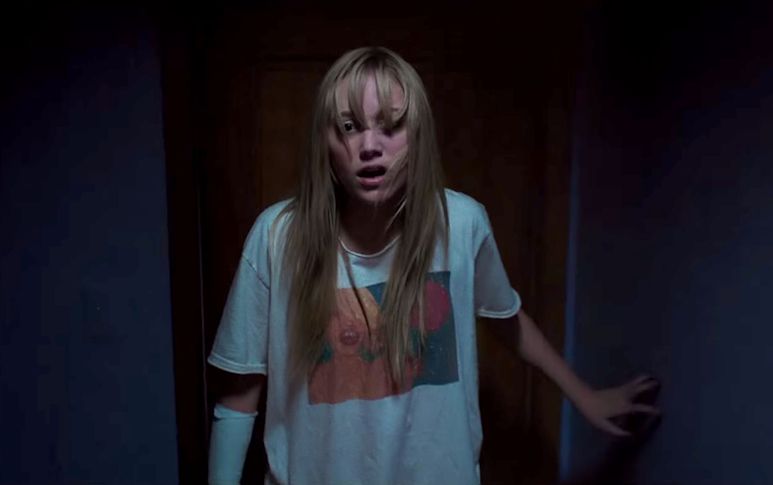
12. **Maika Monroe: The Modern Master of Ethereal Dread**Maika Monroe has carved out a distinct and impressive niche in contemporary horror, earning her place as ‘one of the most impressive scream queens of our modern era.’ Her breakout role in the critically acclaimed *It Follows* (2014) showcased her ability to convey a unique brand of ethereal dread. As Jay Height, a young woman pursued by a relentless, shape-shifting entity after a ual encounter, Monroe delivered an ‘outstanding performance that cemented her as a masterclass in horror.’
Her versatility extends beyond one-off scares. The same year, she made a memorable appearance in *The Guest* as Anna Peterson, a character crucial to the movie’s big twist, proving her range in thriller narratives. She’s also taken on lead roles in other significant horror projects like *Tau* (2018), *Villains* (2019), and *Significant Other* (2022), consistently delivering nuanced performances in diverse horror subgenres.
Monroe’s ability to dive deep into psychological horror is perhaps best exemplified by her ‘most memorable work to date’ as Julia in *Watcher* (2022). In this film, she ‘superbly showcases the character’s emotional journey’ as she navigates being stalked in a strange city, grappling with a husband who ‘minimizes her fear’ and ‘fails to believe her until the very end.’ Her portrayal captures the chilling reality of psychological gaslighting alongside supernatural terror, solidifying her as a poignant and powerful modern scream queen.
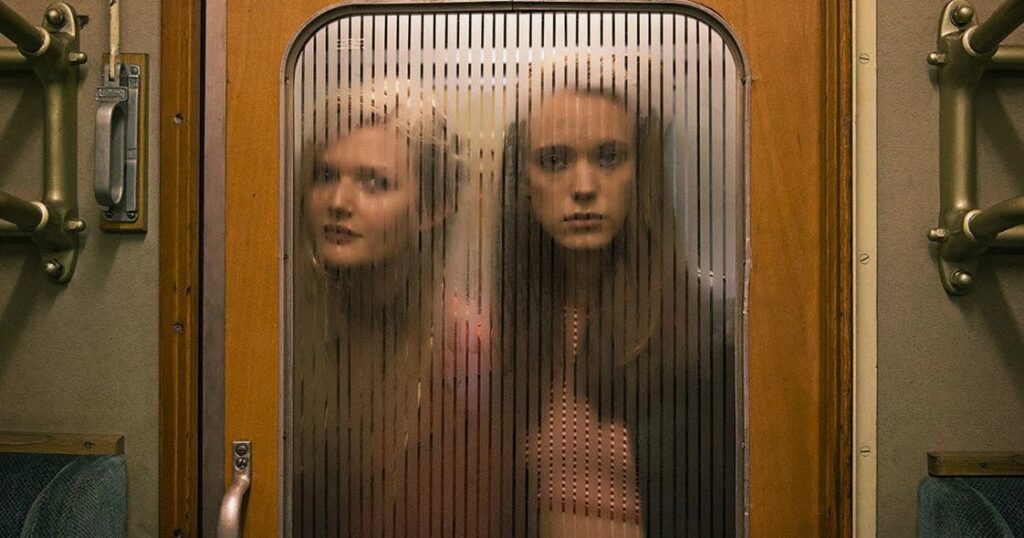
13. **Mia Goth: The Unhinged Charisma of a New Horror Queen**Mia Goth isn’t just an actress with a last name tailor-made for horror; she’s a captivating force who’s redefining the scream queen for a new generation. After transitioning from modeling and making her feature film debut in *Nymphomaniac* (2013), she quickly found her footing in the genre, starring in a string of acclaimed horror and thriller roles including *A Cure for Wellness* (2016) and *Suspiria* (2018).
Her ‘electric performance as the seductive and menacing Gabi in Brandon Cronenberg’s sci-fi horror *Infinity Pool* (2023)’ proved she could handle truly bizarre and intense material with chilling precision. However, it’s her work in the *X* film series that truly rocketed her to scream queen stardom. In *X* (2022), she delivered an unforgettable ‘dual performance as both the sultry, young Maxine Minx and the psychopathic, decrepit Pearl.’
What truly sets Goth apart is her commitment and undeniable presence. Her ‘shrill screams, unsettling smile and crazed eyes paired with several gripping monologues quickly turned the actress into a viral phenomenon’ and cemented her place in horror history. Not only did she reprise her role as a younger Pearl in the titular prequel, *Pearl*, but she also ‘co-wrote the script alongside Ti West,’ showcasing her creative depth. Goth herself admits to being ‘good at screaming,’ noting her ‘naturally high-pitched voice’ makes it ‘quite nice to be able to become unhinged like that.’ We’re all eagerly awaiting her return in *MaXXXine*, the third installment, and even a role in Marvel’s *Blade* reboot in 2025, because, well, ‘more blood for her!’
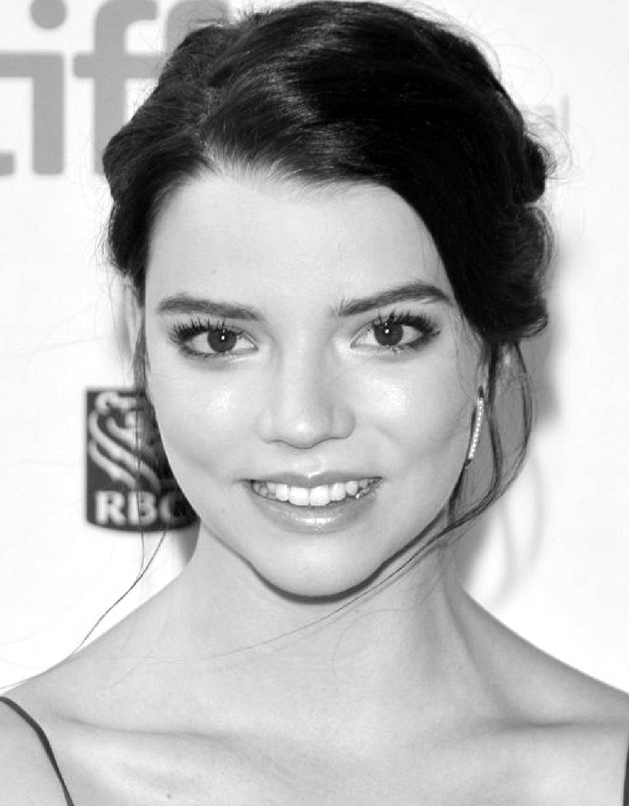
14. **Anya Taylor-Joy: The Versatile Star Who Lives Deliciously**Anya Taylor-Joy is a modern scream queen whose versatility knows no bounds. While she boasts an impressive horror roster including *Marrowbone* (2017), *Split* (2017), *Last Night in Soho* (2021), *The Northman* (2022), and *The Menu* (2022), it was her breakout performance in *The Witch* (2015) that truly positioned her as an icon in the genre.
In *The Witch*, Taylor-Joy gave a ‘layered performance as the protagonist Thomasin,’ a repressed teenager in 1630s New England who endures immense abuse from her puritanical family. Her journey culminates in her being ‘enticed to “live deliciously” by Satan himself and joins a coven of witches in the woods,’ a powerful moment that makes *The Witch* ‘one of the greatest “good for her” horror films’ due to her ‘bold and inspiring acting.’
What truly distinguishes Taylor-Joy as a modern scream queen is her ability to transcend the genre without being confined by it. Unlike many actors who get ‘shoehorned in’ after horror success, she has cultivated ‘a tremendously successful career outside of the horror bubble,’ with acclaimed performances in *The Queen’s Gambit* and *Emma*. This incredible range demonstrates that for her, being a scream queen isn’t limiting at all; it’s quite the opposite, a testament to her profound talent and the ever-expanding definition of this iconic title.
And there you have it, folks! From the ear-splitting wails that first echoed in *King Kong* to the nuanced, resilient performances that define modern terror, the scream queen has evolved into a multifaceted powerhouse. These incredible women, from the trailblazers of yesteryear to the genre-defying icons of today, have not only given us unforgettable scares but have also expanded the very definition of strength, survival, and cinematic impact in horror. They prove that a scream is far more than just a sound; it’s a statement, a revolution, and sometimes, the most badass form of defiance. So, next time you’re on the edge of your seat, remember the queens who built this empire of fear, because their reign is far from over!



